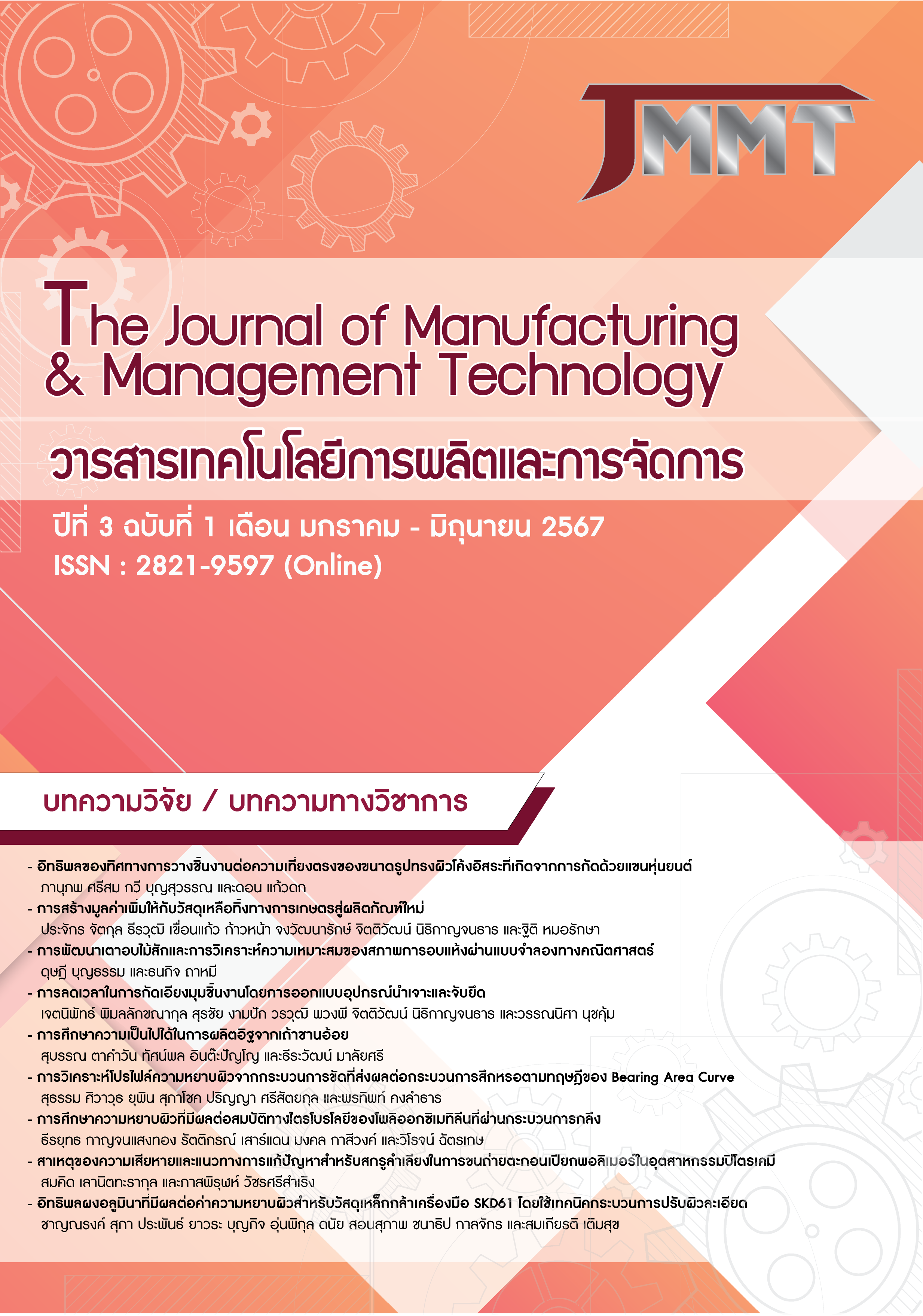Feasibility Study of Brick Production from Sugarcane Bagasse Ash
Keywords:
Sugarcane bagasse ash, Stone dust, Clay bricks, Interlocking blockAbstract
This research was to study the feasibility of using the sugarcane bagasse ash to replace clay bricks in the production of construction bricks using methods and production processes according to the interlocking block production of the Institute of Science and Technology. The initial ratio of brick production is cement: stone dust 1:6 by volume (BA00). Stone dust was replaced by bagasse ash from 10% (BA10) by volume to 100% (BA100). Bricks aged for 7 and 28 days will be tested for various properties which compared with the ordinary construction brick industry standard (TIS. No. 77–2545) and the clay bricks that were available in the market (BA). The research found that the replacement of stone dust with sugarcane bagasse ash at 10% resulted in the highest compressive strength of 79.38 ksc. and able to replace stone dust with sugarcane bagasse ash up to 70% (BA70), which made all properties passed TIS standards. The Replacement of stone dust with 70% bagasse ash (BA70) is the most suitable ratio for brick production because sugarcane bagasse ash can be used the most and was most cost–effective. The appropriate ratio is Portland cement to stone dust to sugarcane bagasse ash 1:1.8:4.2 by volume, but in actual use, the ratio should be 1:2:4 for ease of use, which slightly increased the overall properties of bricks. The weight of brick walls that replaced stone dust with 70% sugarcane bagasse ash (BA70) was similar to clay brick walls that are available in the market (BA) due to its similar density. Therefore, the production of BA70 bricks was the use of waste from the factory to create benefits, which was to produce construction bricks instead of clay bricks and was plastered on both sides. This was similar to the Secure Landfill of Stabilized and/or Solidified Wastes principle.
Downloads
Published
How to Cite
Issue
Section
License
Copyright Notice articles, information, images, etc. was published in this Journal of Manufacturing and Management Technology is a copyright of the Journal of Manufacturing and Management Technology. If any person or deparment wants to bring all or part of it for publish or take any action. Authorization is required in written form from the Journal of Manufacturing and Management Technology only.



